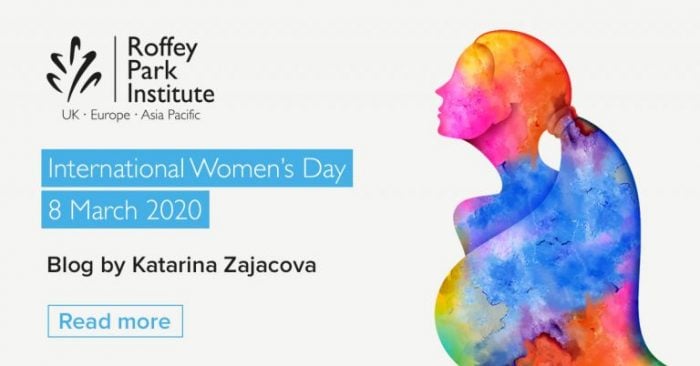What leadership words come to mind when thinking about leadership? With the International Women’s Day just around the corner and voting underway in the Labour Party’s leadership contest, I couldn’t help but think again that although debated a lot, women and leadership is a relationship that we continue not to be able to square up. Although the current Labour Party leadership contest has been and still is dominated by women, at least in terms of numbers, Keir Starmer has been from the start the favourite of many and apparently the most feared of from all candidates by the Conservative Party. Our attitude towards political leadership goes hand in hand with our attitude towards business leadership or any leadership and in fact, they all mutually inform and impact each other.

Some of the reasons for our inability to fully accept that qualities of a leader can be compatible with those qualities that are considered to be feminine may seem obvious as a result of the patriarchal history of leadership. However, delving deeper into the leadership words describing even a contemporary effective leader in the press and everyday life made me pull apart those descriptions and to see what they imply in the political, business or everyday context.
So, what do we envisage as indispensable qualities of a leader, particularly in the case of the Labour leadership, a political leader?
What about someone who has an ‘authority’, ‘a safe pair of hands’ and someone with a ‘statesman like’ qualities? Coincidently, with an addition of being ‘prime ministerial’ material (what does that even mean?), these are the leadership words that have been used by the press when describing Keir Starmer rather than two other remaining female candidates (Rebecca Long-Bailey and Lisa Nandy). According to the press, masculinity and leadership appear to be intertwined with the sense of guaranteed safety, authority and presence.
Having seen the topic of leadership at Roffey Park Institute being approached, discussed and debated from all sorts of angles, it took me back to ponder on the very meaning of the word and to evaluate that meaning in several different contexts.
Let’s take the context of being an effective leader during turbulent times of change; highly applicable to the current British, post- Brexit situation, but equally to the global uncertainty of organisations facing the outbreak of the Corona virus.
Leadership words
What are the qualities of someone we are look to for leadership during such times? What are the adjectives describing the leader taking a country through a transitional period of potential economic hardship? Having searched through numerous articles, listened to the news and all of us, the general public, the leadership words coming up again and again are not surprising, but when looked at in depth they are very telling.
Decisive is one of the leadership words that comes up very often, but also being uncompromising and, (you might be a little bit surprised), also strong. Being strong is still a word used very frequently to describe a good (often a political) leader.
Now, what about a business leader? What about someone who must maintain a calm and order whilst there is a fear amongst the clients and employees about a dangerous, contagious virus, and at the same time, having to be aware of any action impacting the company’s financial sustainability?
Decisive comes up again, but also someone who is robust, business savvy and visionary. Visionary is often used but the interpretation of the word is different. In context of leading during turbulent times, it not seen as someone who is full of positive ideals for the future, but rather as someone who is able to overlook small things of today in order to pursue greater things for the future.
Women in leadership
You can say that all of the leadership words mentioned above can be seen as gendered and essentially in one’s mind it is describing a man, but I would add that it is not only doing that, but a robust, decisive, business savvy, visionary leader is in many minds, not just a man, but a man of certain age, certain skin colour, and of a certain background.
However, although such descriptions, do not only exclude women, the masculinity of those descriptions is so prevalent that it is impossible to ignore. In everyday life, including the working world, it is often the women who deal with the troubles of today and whilst doing that, not having enough space and time for ‘vision’ to be able to consider the greater things of tomorrow.
You might be thinking: ‘there must be other words describing leadership?’. Yes, maybe not directly related to the context of turbulence and change, but more generally, there are words that on the surface appear more gender neutral. Of course, one of the commonly utilised adjectives describing a leader is inspirational. As we have witnessed in the last few years, a young Swedish schoolgirl (Greta Thunberg) became an inspirational leader for millions of people around the globe. Equally, amongst several other examples, a black woman (Michelle Obama) became known as an inspirational leader albeit mostly because she was married to the US president, who was the actual ‘real’ leader.
When we take the word inspirational and internalise it, it is often accompanied by a sense of something very special, almost unachievable for a mere mortal. Women themselves do not often identify with such strong characteristics. Although women are socialised in the way that they often describe men as well as fellow women as inspirational, from an early age boys and men might be encouraged to acknowledge women’s qualities, but are taught to look up to (be inspired by) men and roles considered to be masculine and powerful. Until the association of the expression inspirational leadership begins to be linked with more ordinary, everyday way of being, it will not acknowledge the everyday inspirational leadership women often offer. Instead, it will remain as this distant, magic like quality only preserved for those who have space and power to delegate the everyday concerns to others.
Lastly, what about leading a diverse workforce?
It is vital to note that we can talk about the leadership and diversity from at least two points of view. What mostly happens when the two words (leadership and diversity) are put together in the same sentence, is that what is being referred to is how to be an effective leader at leading a diverse workforce. It is less often that in diversity context we talk about diversity amongst the leaders themselves. Whereas the two are completely intertwined and only when the diversity of those who lead increases, the effectiveness acknowledging and maximising diverse workforce will go up.
So perhaps if we again take the example of gender, the increase in women ‘doing the leading’, will eventually translate into those previously talked about leadership words becoming more gender neutral as those that are ‘being led’ will start to associate inspirational, decisive, robust etc with both women and men of all backgrounds and the coverage of the Labour leadership contest would have a lot more diverse feel to it.





